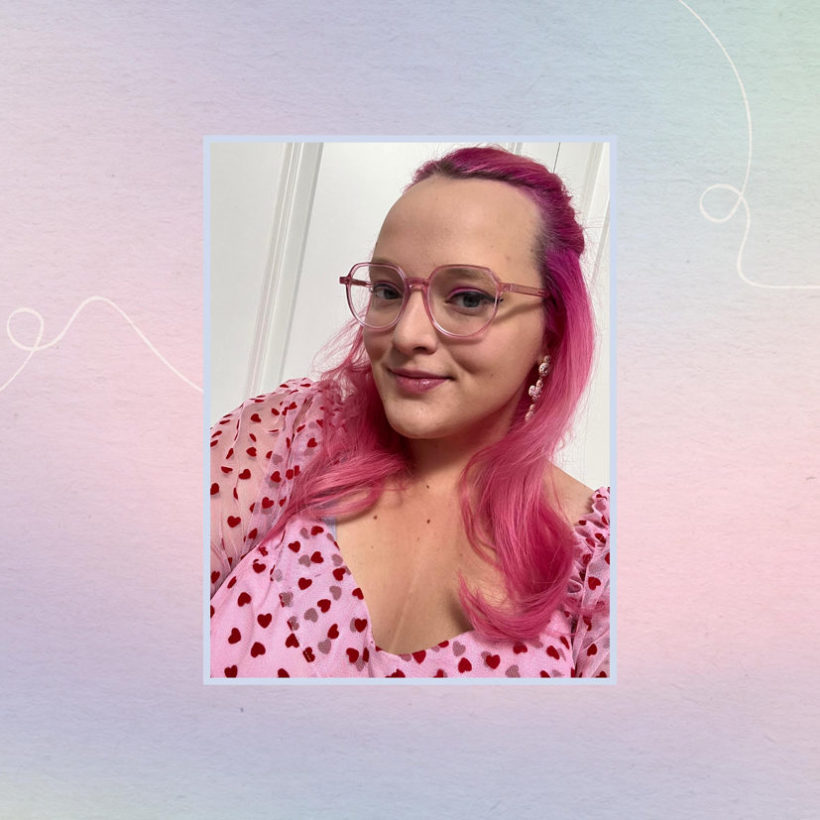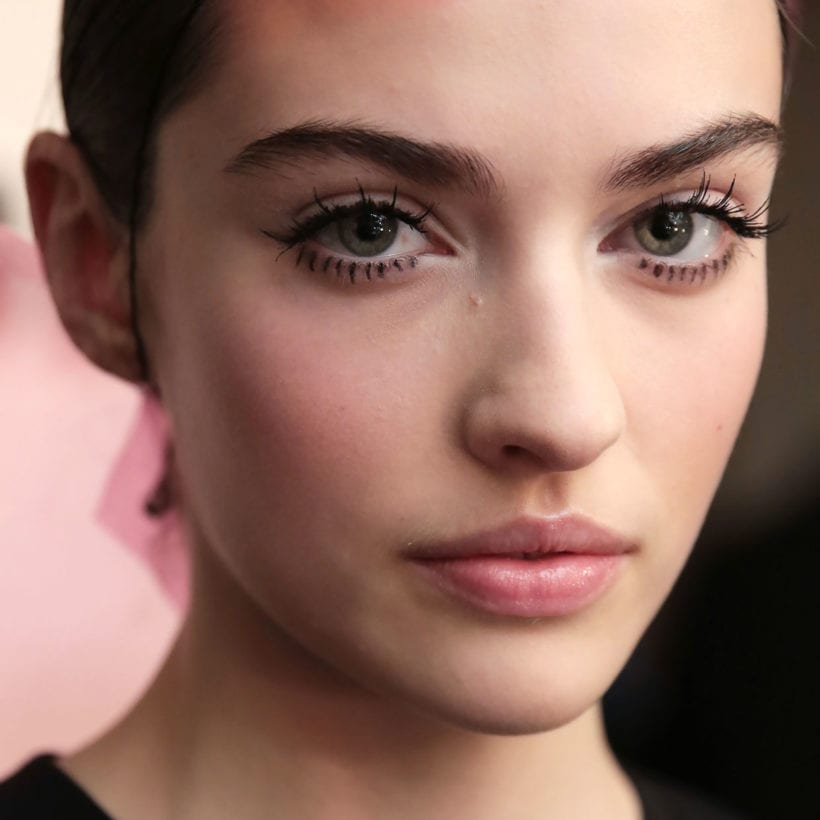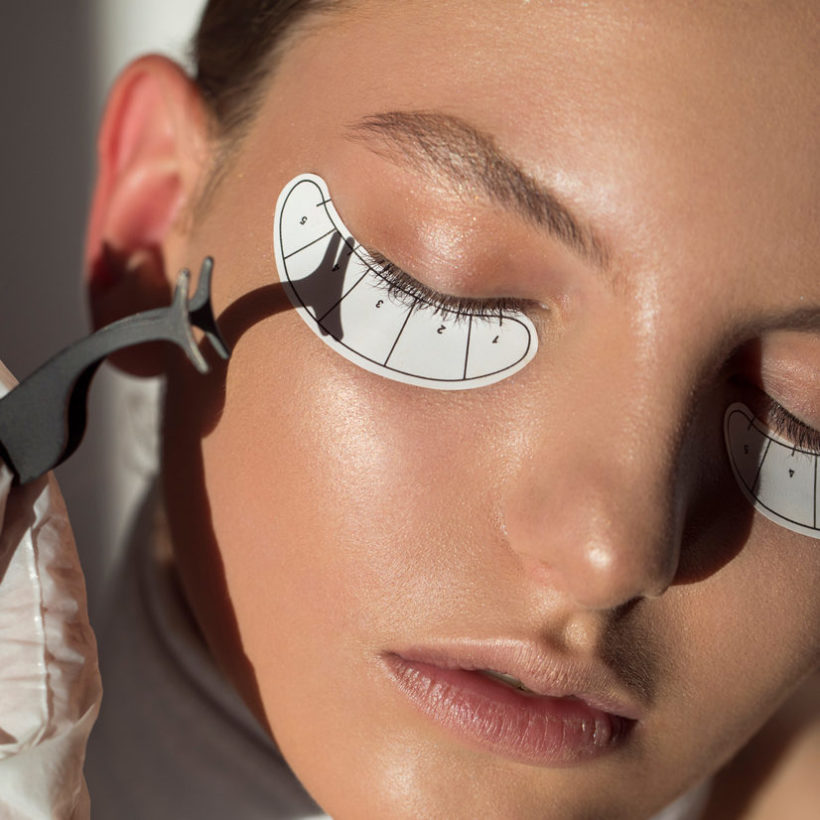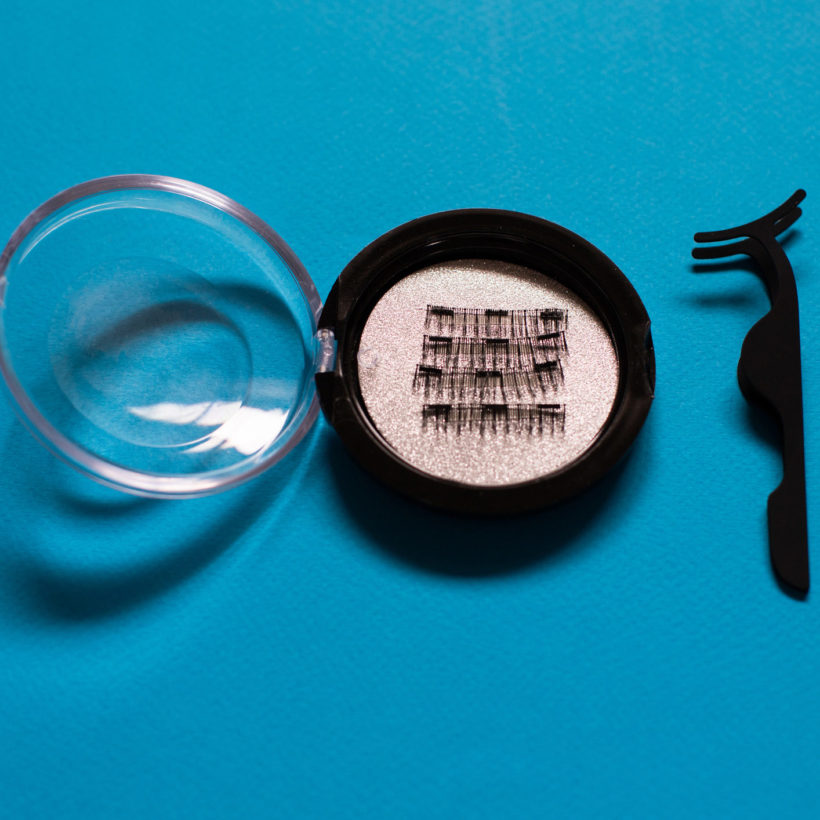Though I’ve interviewed countless makeup pros over the years, there’s still one thing in the beauty world that’s always intimidated me, even with the access to an expert Rolodex: how to apply false lashes on my own.
I haven’t worn false lashes since my wedding in 2015 (and even then, it was done by a professional), but I distinctly remember how they made me feel. As a Korean person with naturally small eyes and stick-straight, stubby lashes, faux lashes instantaneously made my eyes pop in a way that no mascara alone could achieve. I loved how my eyes no longer looked “lost,” and they gave me the confidence I needed when posing for a thousand photos.
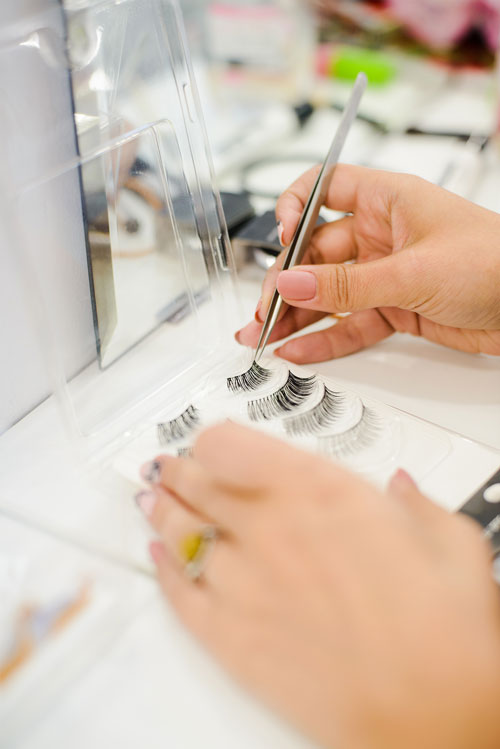
Like many other people, I’ve always associated false lashes as something “special” to reserve for fancy occasions — not an extra effort for daily Zoom calls with colleagues in our pandemic world. Sweatpants and faux lashes felt like an oxymoron to me. But it looks like I’ve been missing out on the memo: The false eyelash market has been booming, according to a recent study. With an increasing desire to find ways to enhance our physical appearances, the research showed consumer demand for false lashes was an estimated market value of $1.4 billion in 2021 and is projected to reach $2 billion in the next six years. The gravitation towards faux lashes and other eye makeup products could result from a desire to find new ways to enhance our above-the-mask beauty looks. In previous times, lipstick arguably dominated the way we quickly changed our makeup looks and lifted our moods, but with masks covering the bottom half of our faces, that’s not so much the case.
“Even when you’re on Zoom calls all day, I think that when you look good, you feel good,” says Renny Vasquez, celebrity makeup artist, and KISS brand ambassador. “Sure, we’re going through a pandemic, but why not put your best face forward? Go that extra mile and see what’s on the other side of it,” he adds. We can’t promise faux lashes will make you look forward to all-day virtual meetings, but perhaps it does spark a little bit of that wedding-day-level joy into your daily routine — and who wouldn’t want that?
Below, Vasquez walks us through all your burning questions about false lashes, especially if you’re new to the task. And, it turns out, applying them yourself is a lot easier than you think.
What are the different types of lashes?
Faux lashes come in individuals, strips, and clusters (a few individual lashes grouped together). For beginners, strip lashes are often the most user-friendly and take less patience. Lashes also come in different materials — all with their pros and cons:
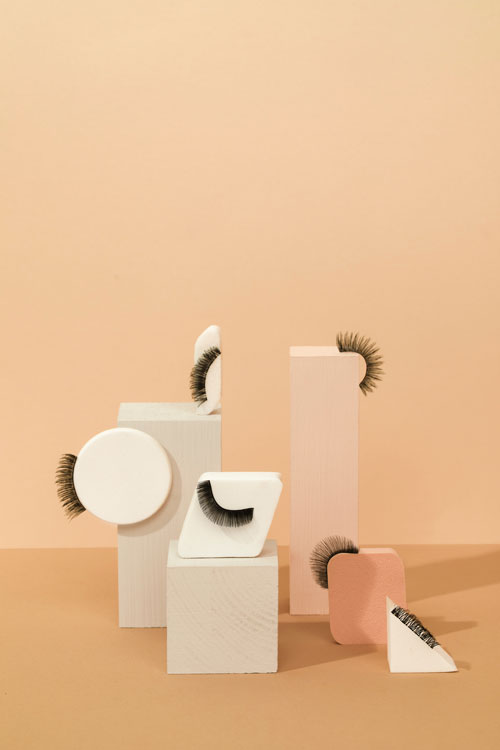
- Mink: “Real mink lashes tend to be soft and fluffy, and they can be natural-looking or dramatic. They usually feel comfortable on your eyes. However, they tend to shed a lot. Mink lashes tend to be the most expensive lash. Faux mink usually give you the same look as a real mink lash. However, they are cruelty-free since they are made of synthetic material, which is usually a more premium quality than a normal synthetic lash. Faux mink lashes are really popular because they give you the look of a mink lash for a lot less,” says Vasquez.
- Silk: “These are made of synthetic materials intended to mimic real silk in terms of being super lightweight and soft. These lashes tend to be super dark, shiny, very flexible, and easy to wear. However, the hair-like fibers are not as natural-looking as the hair you would find on a mink lash,” he says.
- Synthetic: “These lashes can be various blends of synthetic materials. They have an extensive range of shapes and sizes. For the most part, synthetic lashes are the most common lashes. Synthetic lashes can be made to look natural and dramatic as you’d like,” he says. It may take trial and error to find the most natural-looking option for you.
What are the tools I need to get started?
You’ll need the faux lashes of your choice, a lash adhesive/glue, tweezers, or a lash applicator. “KISS makes starter kits for Falscara. It’s one of my personal favorites. They also make kits to apply strip lashes that include glue and a lash applicator, which is handy,” says Vasquez.
How do I trim my faux lashes?
Since everyone has different eye shapes, first “try on” your lashes without glue by laying them over your existing lashes. “Once you have a good idea of how much you may need to trim, I would start small. Trim from the outer corner of the lash using small scissors. I use eyebrow or cuticle scissors. Trim just a bit, then keep checking them against your natural lashes until you have a perfect fit,” says Vasquez.
What’s the right way to use lash glue?
Avoid applying lash glue directly to your eyelid. “I always apply the glue to the false lash band unless you are using a special type of lash that requires a different method,” says Vasquez. It’s helpful to wait a few seconds after applying your glue onto your lashes so it can get a little tacky and stick better to your skin.
What’s the best way to apply false lashes?
Instead of looking straight ahead of you, “look down, keeping your eyes open. “You can use tweezers to apply your lashes right on top of your natural lash line,” says Vasquez. “Then, press the lashes together with your fingers to help create a seamless look,” he adds. Use an eyelash curler to help blend them into your natural lashes even further. “Eyeliner always helps to make lashes blend without seeing the band. Top off your look with mascara to further fuse those natural and faux lashes together,” says Vasquez.

How do I fix my faux lashes if they detach when I’m out and about?
“There’s a cool glue called Lash GLUEliner that comes with a fine brush tip applicator which allows for those quick and easy touch-ups. I tell everyone to keep it on hand,” says Vasquez.
How long should my false lashes last?
It depends on the type of lashes you’re using, your adhesive, and your application method; your faux lashes should last the whole day until you take them off. Synthetic lashes usually can’t be reused more than a handful of times. Human hair or animal hair will last longer (up to 20 times depending on the type) as long as you clean it properly with makeup remover and store them properly, so they don’t get out of shape. If you’re pairing your faux lashes with liner and mascara, it’s essential to wash them thoroughly with makeup remover after use to extend their life.
What’s the best way to take them off?
Grab the end of your faux lash — being careful not to tug at your natural lashes — and very slowly peel them off your eyelid. If you’re having trouble peeling them off, soak a cotton pad with an oil-based makeup remover and let it sit on your lid for up to a minute to help break up the adhesive.
Don’t get tempted to leave them overnight (especially if you’re topping them off with mascara and liner): “For most lashes, you don’t want to leave them on when you sleep because the band irritates your skin while your eyes are closed. Other systems like Falscara are created to last longer and are more flexible so that you can sleep with them on,” says Vasquez.
We only recommend products we have independently researched, tested, and loved. If you purchase a product found through our links, Sunday Edit may earn an affiliate commission.




